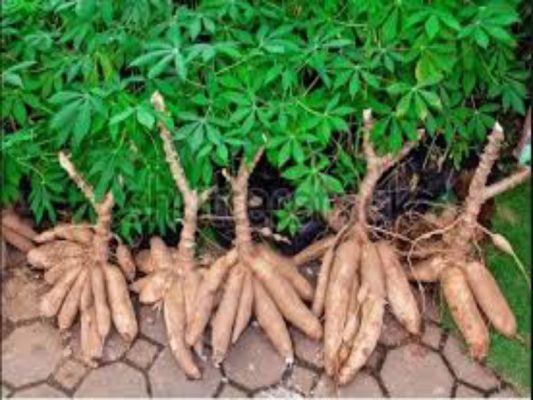By Chiedozie Egesi
The hardy root crop could be part of the solution to the grain supply challenges aggravated by the Ukraine war
Cassava is a shrubby root that can produce a good harvest even in hot, dry conditions that kill off other crops.
Growing up in Nigeria, a staple of our family dinner table was a doughy dish called fufu. In the US or Europe, fufu would be called a dumpling. The difference is that dumplings, typically made with wheat flour in the northern hemisphere, in Nigeria are made from cassava flour.
I think about this crucial difference as the escalating food crisis in Ukraine exposes a dangerous global dependence on a single commodity: wheat. Nigeria, for example, is the world’s sixth largest wheat importer, with a significant portion coming from Ukraine and Russia. Like many African countries, Nigeria is bracing for the impact of surging wheat prices.
In response, the African Development Bank has ear-marked a whopping US $1 billion to boost wheat production across Africa. But it would be wise to spend a significant portion of this money on the continent’s most reliable crop, cassava.
Nigeria is the world’s largest cassava producer and it is playing a huge role in a revolution of sorts. This shrubby, hardy root crop looks nothing like wheat, though cassava flour is often used as an alternative to wheat flour and has a wide range of other uses. There’s even cassava beer. Moreover, if you think of wheat dependence as the food equivalent of oil dependence, cassava can help the world address a longstanding need for different sources of caloric fuel – because the food crisis we are now experiencing did not originate with the war in Ukraine. For the past decade, the combination of food production challenges from the climate crisis, severe crop diseases, armed conflicts and the Covid pandemic have caused a steady increase in hunger and poverty.
Cassava can make an important contribution towards shock-proofing global food systems. Especially in sub-Saharan Africa where it is already the fourth most important source of daily calories. Cassava can produce a good harvest in hot, dry conditions that kill off other crops. That makes it ideal for adapting to stressful growing conditions caused by the climate emergency, such as the series of droughts now impoverishing millions of agriculture-dependent people in east Africa.
While it is one of the most world’s most sustainable food crops, cassava also has been one of the most neglected. When I started my career as a crop scientist, I had little interest in it. My parents grew cassava on the small farm they kept to supplement their teachers’ salaries and I had enormous respect for the crop, seeing how, in years when our maize crop was poor, our cassava never wavered. So when I was offered a position as a cassava breeder with Nigeria’s National Root Crops Research Institute (NRCRI), I took it.
Now, I consider myself a cassava evangelist. I have been fortunate to arrive on the cassava scene when support has finally started to increase. Cassava breeders in Africa now have access to advanced tools that can screen varieties to quickly identify plants with valuable genetic traits, such as resistance to disease or improving a particular taste or texture.
I have also seen a global network of cassava enthusiasts emerge. There are now more than 1,000 – including experts from South America, where cassava originated, and Asia, where there is significant interest in the crop – interacting through an open data platform called CassavaBase. It’s a virtual community that explores the results of field trials and contributes to a data bank cataloguing cassava’s genetic diversity. Cassava breeders are also moving beyond the science world to develop partnerships with farmers and social scientists. For example, a significant portion of cassava producers in Africa are women and we’re learning that the qualities they value in cassava can be different from men.
I’m not claiming that cassava is the cure for all that ails the global food system. However, I do believe it can contribute to much-needed diversity.
Outside Africa, many people only encounter cassava hidden in a dessert – it is the main ingredient in tapioca pudding – or in gluten-free products. But I would encourage more people to enjoy cassava in their daily diets – it could be a crucial step towards shaking the world’s destabilising dependence on wheat.
Egesi is project director of the Next Generation Cassava Breeding Project, senior scientist at the International Institute of Tropical Agriculture (IITA), and adjunct professor of plant breeding and genetics at Cornell University.


